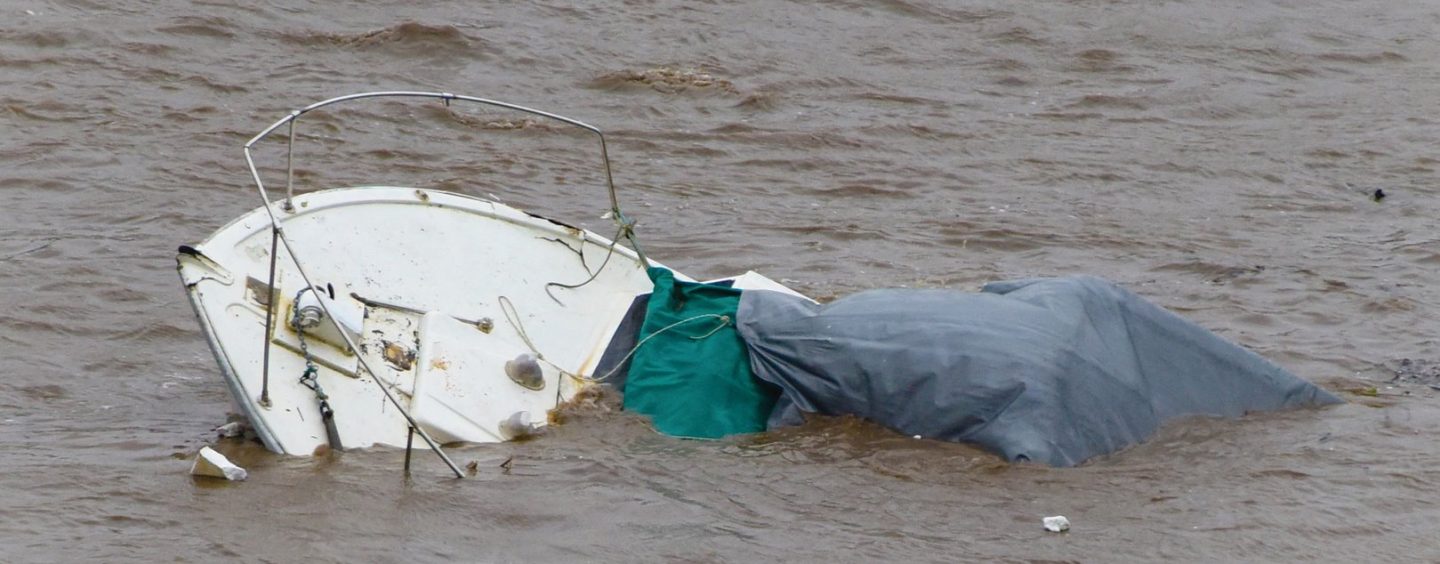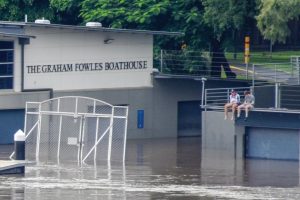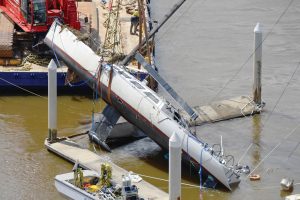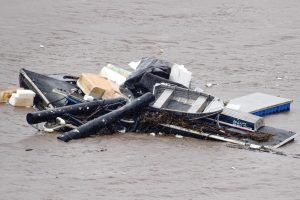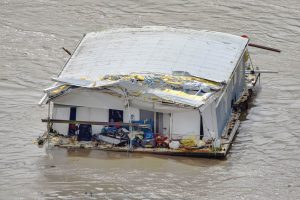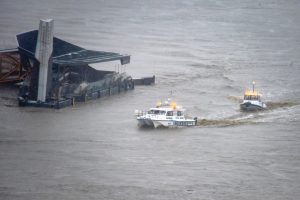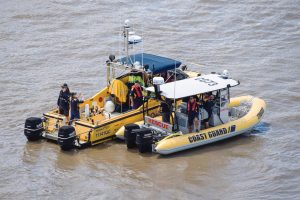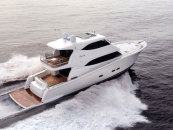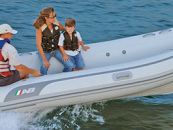EXCLUSIVE INTERVIEW WITH MARITIME LAWYER & MARINE INSURER
Story by Roselle Tenefrancia
The big rain event in February was so called “2022 Eastern Australia floods”. Rainfall of over 400 millimetres (16 in) was recorded across the greater Meanjin/Brisbane area. In the three days leading up to 28 February, Greater Meanjin/Brisbane received 676.8 millimetres (26.65 in) of rainfall, said to be the largest three-day total ever recorded in Meanjin/Brisbane.
The experts indicated that the flood event was caused by a low pressure system over Queensland’s southern coast. This dragged in moisture from the Coral Sea in the north, raising it over the Queensland coastline.
On 28 February, Maiwar/Brisbane River’s height reached 3.8 metres (12 ft), higher than the 2.3-metre (7 ft 7 in) peak height of flooding in 2013 and below the 3.9 metres recorded during the 2010-2011 Queensland floods, but less than the peak height of 4.46m in 2011.
The 2022 Eastern Australia floods caused an incredible amount of damage to property, mainly flood-damaged homes both in Queensland and in New South Wales. Thousands of people were gravely affected, and many will not even be able to recover their damaged homes.
The severe weather events also caused significant damage to marine infrastructure and property. The raging Maiwar/Brisbane River was relentless in pushing everything in its way, creating havoc on the river and the banks, all the way to the ocean through Moreton Bay. After weeks of major clean-up work on and in the river, with thousands of tonnes of debris recovered by various groups and stakeholders, including Maritime Safety Queensland, the Australian Defense Force and some not-for-profit clean-up organisations, Maiwar/Brisbane River reopened to recreational boating on 26 March.
But there are still questions that remain unresolved. The Queensland government have yet to look back into the causes of damage not only to infrastructure and property, but also to the marine environment. How to manage and control the impact of extreme weather and natural events is something that all sectors must work on for the future.
From the perspective of recreational boating, it would seem that much of the damage to watercraft and marine infrastructure could have been avoided, if not minimised. While everyone has their own opinion, it is worth knowing what rights and obligations owners of recreational watercraft and marine infrastructure have in similar circumstances.
Legal and insurance claims are topmost in the priorities for those who have been affected.
“In the true nature of a natural disaster, much of the loss was unpreventable,” states Michaela Claes, operations manager at Pantaenius Australia. “Fully secured boats were torn from their jetties, or floated away still connected to pontoons, only to be retrieved hours or even days later, but in a completely different condition. Others had adrift objects hit their boats which can also cause an array of damages.”
However, there are damages and losses that were indeed preventable, such as damage due to rainwater, according to Michaela. “A number of boats did not have operational bilge pumps on board causing flooding damages,” she says.
John Kavanagh, principal at Pacific Maritime Lawyers, adds, “Bear in mind that very little of the damage in this case would have been caused by floods. Damage would have been caused by rainfall, by impact from other objects in the water, or from the vessel coming free from its moorings. The management of automatic bilge pumps, mentioned by Michaela, is crucial.”
Flash flood events are not new to Queenslanders, and there is a constant threat from Mother Nature to pour on our forests and rivers that we cannot humanly and possibly prevent.
However, in situations similar to the recent extreme weather event, we can be more prepared and be more proactive in protecting our investments. John advises, “Vessel maintenance before the weather season, maintaining a proper watch on the BOM, and ensuring there is a plan in place [are just a few of the things you can do to prepare for such events]. In Brisbane, in particular, there was quite a bit of warning before the water hit, and therefore there was time to make preparations, whether by strengthening moorings, preparing the vessel, moving the vessel onto the hardstand, or even making for a safe harbour outside the weather. While there are always going to be unavoidable incidents, there were opportunities for boat owners to shift the odds in their favour.”
As owners of watercraft, we are always vulnerable to the elements of nature. That is why most owners purchase marine insurance to cover for many of the foreseeable disasters that may arise.
Michaela declares, “We also know that a lot of the boats on the Brisbane River which suffered the most damages were uninsured, which is incredibly sad. It definitely does pay to have insurance, even if it is only the third party liability insurance that will provide cover should a salvage operation be required.”
Needless to say, the insurance coverage only protects the inclusions in the policy. ”It is not at all unusual to find boaties who have replaced equipment on board their vessel without updating their policies,” explains John. ”Unfortunately, this may mean the vessel is inadequately insured if harm occurs.”
John further emphasises the need for better preparation given current conditions. “Climate change is predicted to continue to bring extreme weather events to Queensland, and this will make it even more crucial that boat owners have a plan and put it into operation, and that they have adequate insurance in place.”
Insurance companies differ in their policies on natural disaster coverage. Some companies that will only cover for flood damage, while others will have more coverage depending on the policy chosen.
Michaela explains, “Pantaenius does provide cover for the damage caused by natural disasters, including the recent flooding events in NSW and QLD. The cover may be reduced, however, if a boat was not adequately protected at the time of loss. For example, the bilge pumps were not operational or a boat was left on anchor, as opposed to being safely secured. Pantaenius also does not provide cover for damages caused by leaving safe harbour to enter an area where a warning is in place. All this is, however, reviewed on a case-by-case basis.”
Quick responses from the insurance companies is also key in these circumstances. “We have much experience with the impact of natural disasters so we are able to provide rapid assistance on the ground as well as understand the emotional turmoil that comes with such losses,” explains Michaela.
Further, adequate and correct advice is necessary for a watercraft owner to fully understand the coverage of insurance, as well as the limitations that come with the claims. Reliable legal advice should always be sought in order to avoid further problems. “We have assisted boat owners to work their way through issues with all the major insurers. In the event of a dispute, having advice from professionals can help you to reach a positive conclusion with the insurer,” explains John. ”Our objective is not to fight with the insurer, but rather to work with them to ensure a positive outcome for the client.”
Another key element in preventing or minimising damage is having safety management systems (SMS) in place, particularly for commercial or larger vessels. “SMS are mandatory for commercial vessels, and they provide a mechanism for systematically thinking through the risks of operating a vessel, not just during extreme weather events, but, in fact, at all times,” advises John.
John sums it up best with his final statement: “If your boat, and the people on it, matter to you, then investing in safety is investing in them. Larger recreational vessels are complicated engineering systems – often as complicated as a commercial vessel. The bigger the vessel gets, the more that can potentially go wrong, and the more important it is to invest in a systematic process of assessing and attending to safety. After all, while insurance is good, avoiding an incident in the first place is better.”
PRACTICAL TIPS FOR SECURING YOUR WATERCRAFT:
- Make sure you use additional ropes and fenders. Ensure the boat is as secure as possible.
- Remove awnings, shades, sails, loose furnishings and store them securely on board but out of harm’s way.
- If your boat is kept on a mooring or you are living on anchor, it may be wise to book a berth until the storm passes.
KEY QUESTIONS TO ASK IN DEVELOPING SAFETY MANAGEMENT SYSTEMS:
- Do you have a “man overboard” procedure? Have you practiced it?
- Do you have a daily start-up checklist, or do you just fire up the engine and go?
- Is there a second person aboard who can operate the vessel if you are incapacitated? Does everyone at least know how to use the radio?
- If you’re fishing, have you reviewed the locations of any nearby green zones?
There are a hundred things to think about, and an adequate SMS will let you do so systematically.
Published in print July-September 2022






















